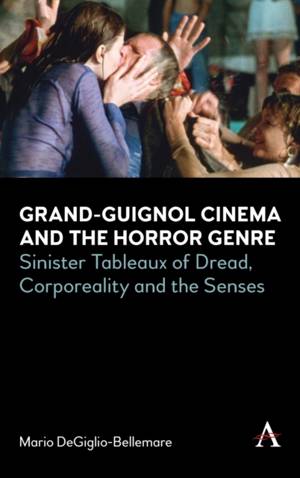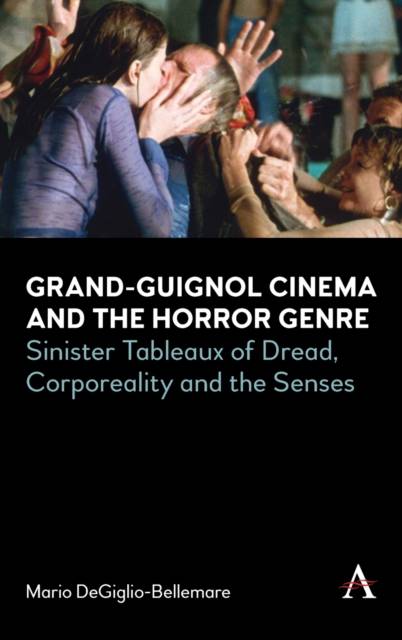
- Retrait gratuit dans votre magasin Club
- 7.000.000 titres dans notre catalogue
- Payer en toute sécurité
- Toujours un magasin près de chez vous
- Retrait gratuit dans votre magasin Club
- 7.000.000 titres dans notre catalogue
- Payer en toute sécurité
- Toujours un magasin près de chez vous
Grand-Guignol Cinema and the Horror Genre
Sinister Tableaux of Dread, Corporeality and the Senses
Mario Degiglio-BellemareDescription
Grand-Gugignol Cinema and the Horror Genre traces important contributions of the Parisian Grand-Guignol theatre's Golden Age as theoretical considerations of embodiment and affect in the development of horror cinema in the twentieth century. This study traces key components of the Grand-Guignol stage as a means to explore the immersive and corporeal aspects of horror cinema from the sound period to today. The book is a means to explore the Grand-Guignol not only as a historical place and genre, but theoretically, as a conceptual framework that opens up an affective mapping of Grand-Guignol attractions in cinema.
In a broader theoretical sense, Mario DeGiglio-Bellemare positions Grand-Guignol cinema in corporeal and affective terms as a way to discuss central themes from the Golden Age of the Grand-Guignol theatre as they figure within the framework of post-representational analysis in cinema studies. Post-representational analysis draws meaning out of matter, or the material intensities of films; here, making sense (representation and meaning) and also sensing (in a more corporeal, sensorial way) have political relevance that cut across gender, class, race and sexuality. The author deploys the Grand-Guignol as a conceptual tool to reveal its important influence on the horror genre by focusing on the dominant themes of the Grand-Guignol theatre that cinematic horror has taken up in its own immersive theatrics of the corporeal and sensorial.
This study's restoration of a long Grand-Guignol tradition in cinema makes it a significant contribution to new theorizations of horror. It brings seemingly disparate traditions into conversation, as American, Canadian, French, and Italian cinema are all important sites for thinking through cinematic embodiment. These four countries have developed their own important genres and movements of Grand-Guignol cinema: the slasher, the "French Films of Sensation," Canadian "body horror," and the giallo. The Grand-Guignol famously operated in a dead-end of Chaptal Street, in the Pigalle district of Paris; this study offers affective and corporeal readings that open up new byways beyond the dead-end of psychoanalytic readings that continue to be dominant in horror genre scholarship.
Spécifications
Parties prenantes
- Auteur(s) :
- Editeur:
Contenu
- Nombre de pages :
- 270
- Langue:
- Anglais
- Collection :
Caractéristiques
- EAN:
- 9781839980961
- Date de parution :
- 14-02-23
- Format:
- Livre relié
- Format numérique:
- Genaaid
- Dimensions :
- 152 mm x 229 mm
- Poids :
- 566 g







